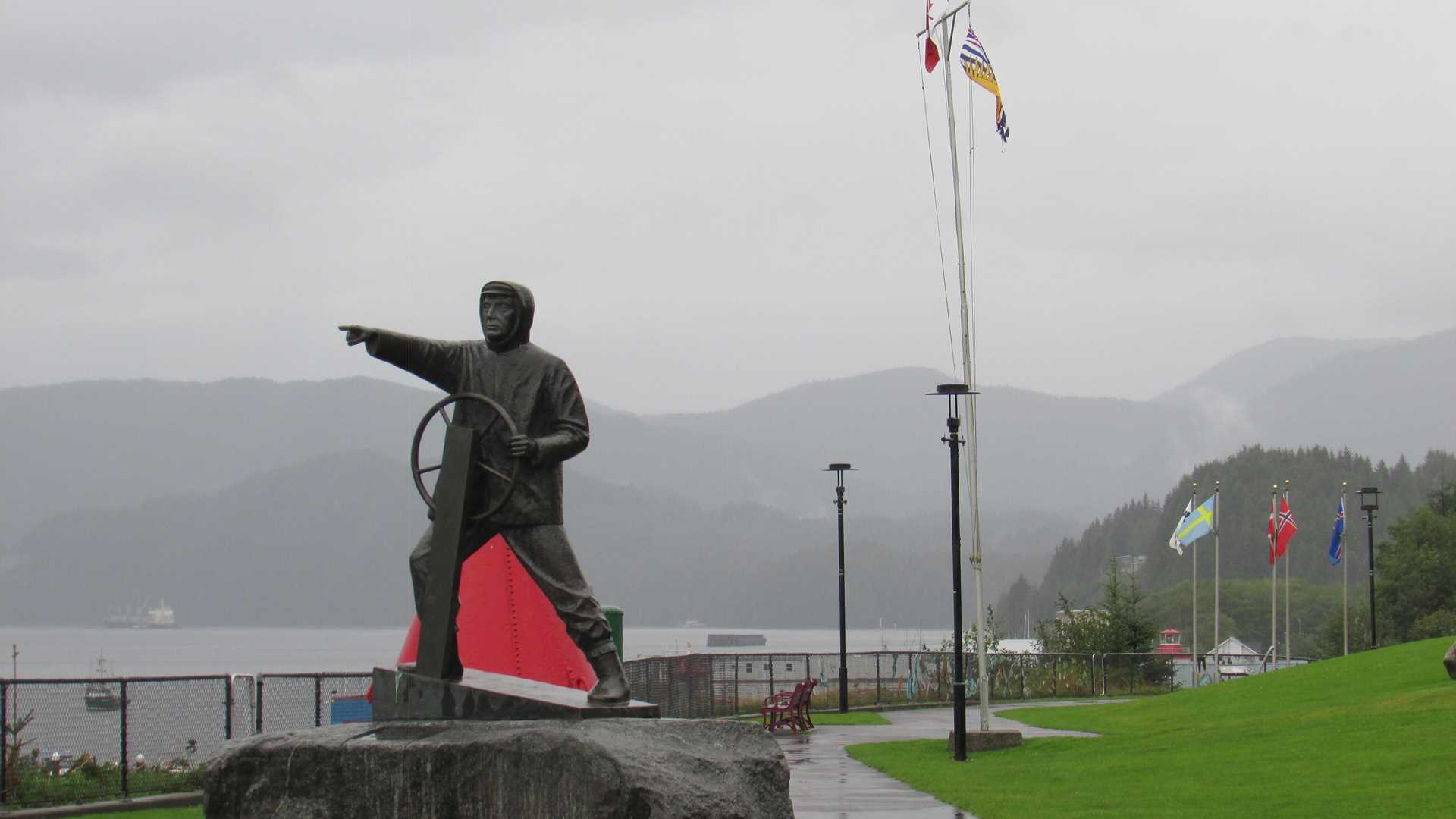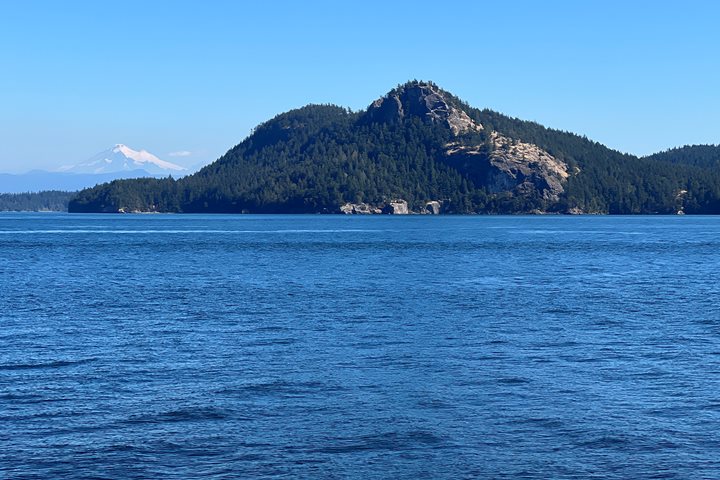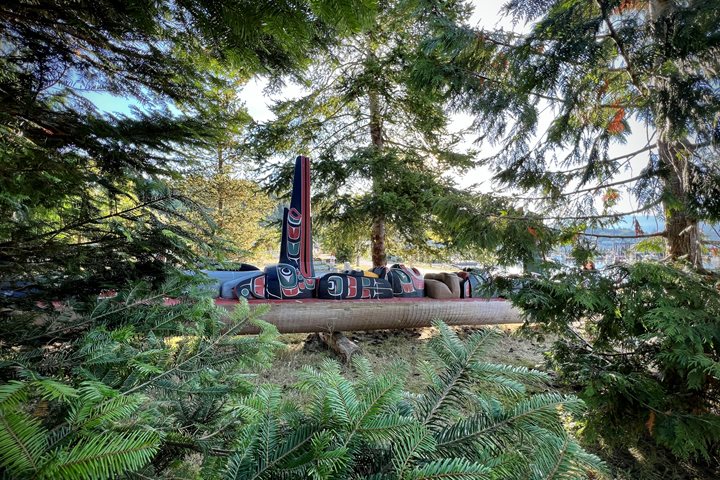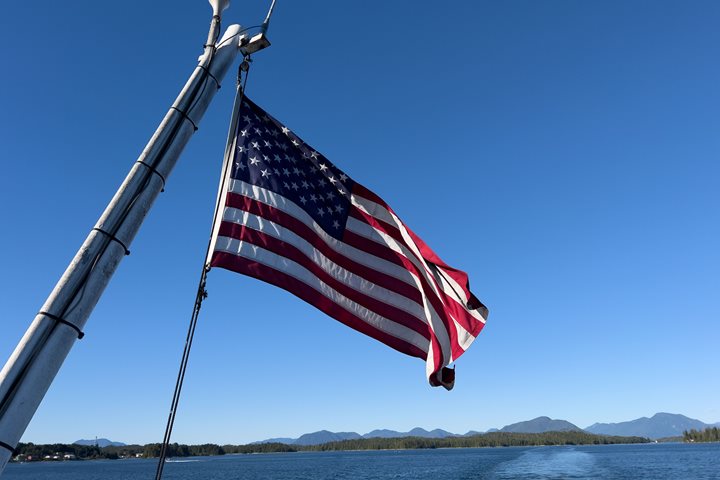Overnight, we crossed the Dixon Entrance, the open sound that separates Alaska from Canada. We arrived at Prince Rupert, British Columbia no worse for the wear. Known as the “City of Rainbows,” rain was certainly in the forecast and in the air. Some guests spent the morning relaxing on board while others donned their wet weather gear and headed out to explore this bustling port city of 12,000 souls.
Prince Rupert’s history as a center of trade goes back thousands of years to the early days of the Coast Tsimshian culture. This culture still thrives here due to the rich natural resources of land and sea. In the afternoon, guests visited the Northwest Coast Museum, which is built of massive logs in the style of a traditional long house. Utilitarian objects, like clothing, work implements, and household objects, also serve as works of art. The complex relationships between humans and nature were on full display in both the relics and modern items used by contemporary Native artists.
Contact with European and Asian traders in the 1700s and 1800s initiated many changes among the First Nation peoples who call this part of North America home. The 1900s saw industrialization with the arrival of the Grand Trunk Railroad, connecting the coast with the interior. In September of 1930, the railroad carried over two million pounds of halibut from Prince Rupert to Chicago.
Today, Prince Rupert is a deep-water port connecting Canada with the rest of the world. Container ships bring goods from afar, and bulk carriers transport grain, coal, and wood pellets from the forests, mountains, and plains of interior Canada.







